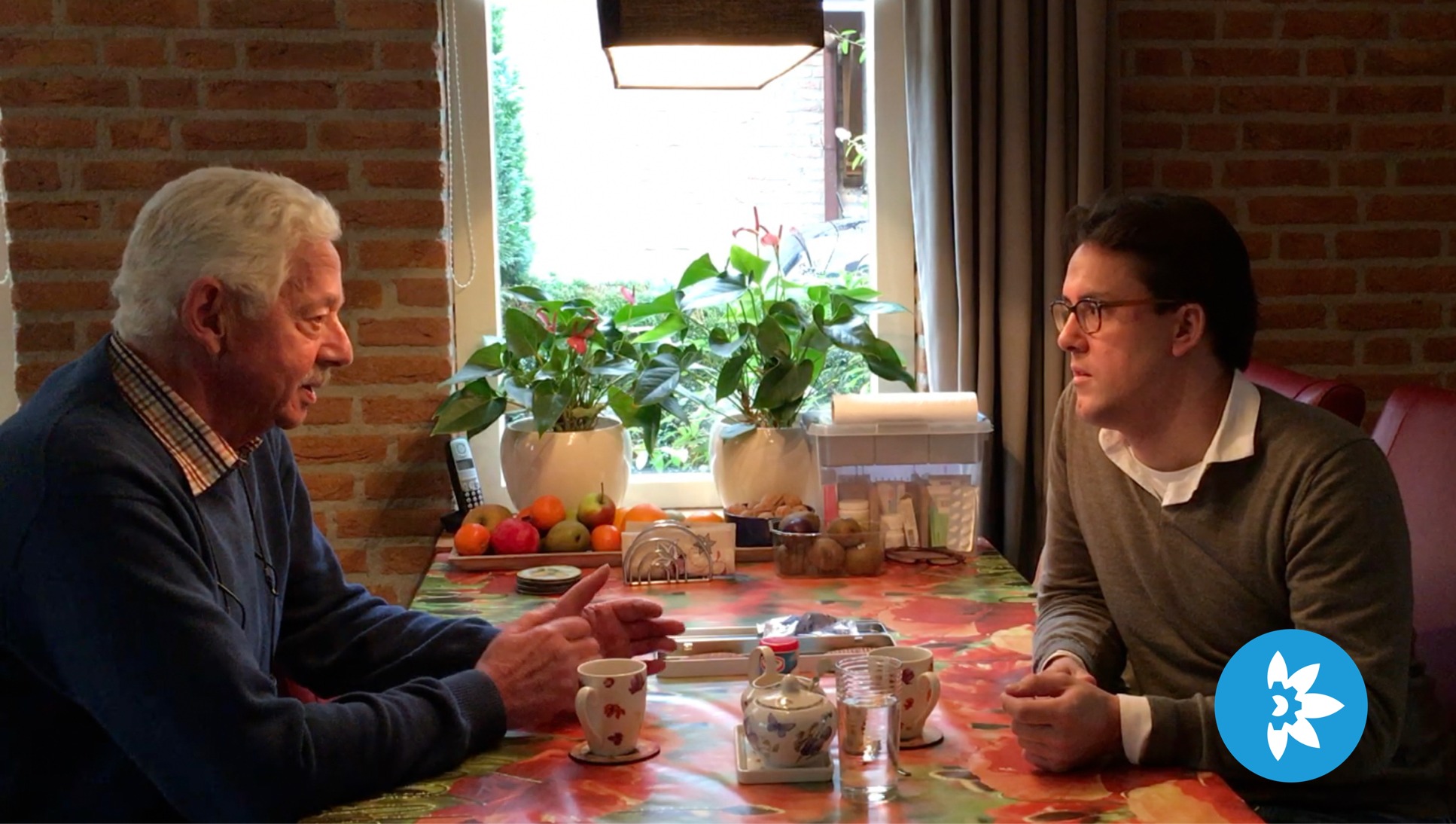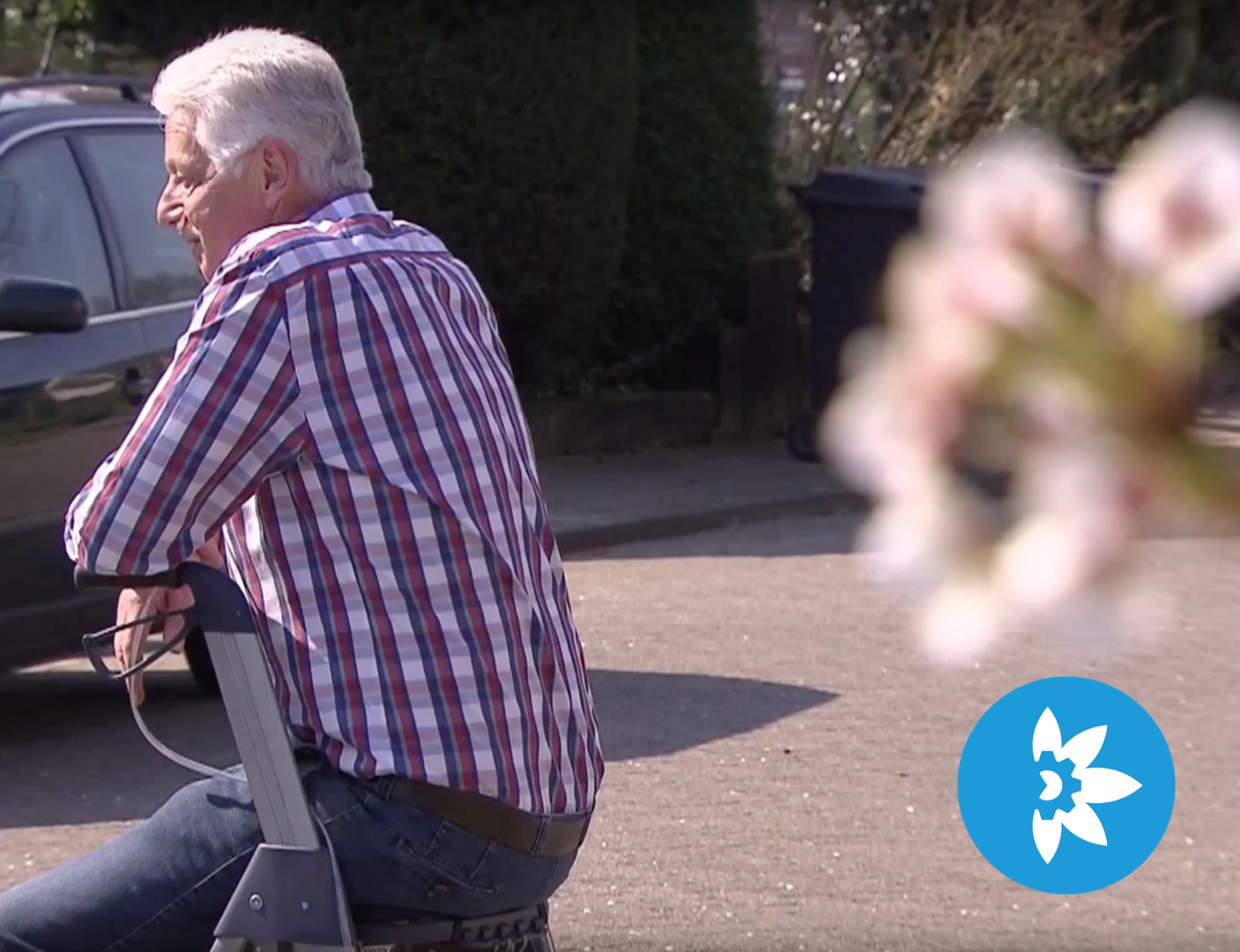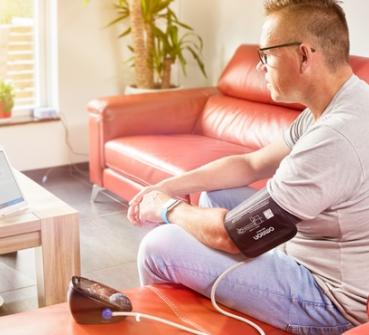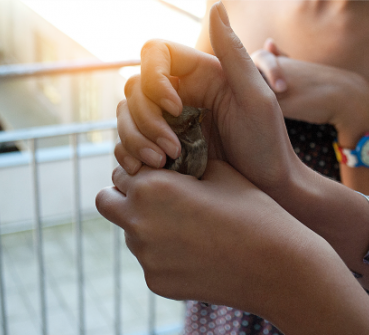Living with COPD: more than just a disease
Every year, 47,000 people in the Netherlands are diagnosed with COPD: a diagnosis that turns their lives upside down. Around 350,000 people in this country are afflicted with this chronic pulmonary disease. What is it like for people who have to live with this disease? And how could we improve their care? In the first part of the series, ‘Living with...’, I visit Mr. Bremer in the Dutch town of Didam. He and his family have known for a number of years that he has COPD.
‘Come in. How nice of you to visit,’ said Mrs. Bremer as she greeted me. We took our seats in a cozy living room where I was immediately offered a cup of coffee and a genuine Dutch treacle waffle. Mr. Bremer, a former secretary and honorary member of the association for training police dogs, sat across from me and proudly told me about the dozens of certificates on the wall. He had a real passion for training ‘his dogs’. Unfortunately, he had to learn to live with the fact that he would have to give up this passion.
Even so, Mr. Bremer (age 63) was anything but glum. It had not been easy for him, but he could now say he has accepted his ‘new life’ with COPD. For both him and his family, this had been a process that involved more than just the medical aspects.
Today, he helps other patients and is committed to improving the care for COPD patients. This is one of the reasons why he wanted me, as ‘the inventor of the new kind of care’ as he calls me, to visit him.
‘Did I smoke? Let’s just say I was really good at it...'
The diagnosis: COPD
Mr. Bremer had always led an active life. He worked hard at a service station where he spent every day breathing in exhaust fumes and gasoline vapor. He also loved his cigarettes - something everyone thought was normal in those days. Actually, the diagnosis of COPD was probably unavoidable.
‘Even so, I couldn’t believe it at first,’ said Mr. Bremer. ‘At a certain point, all I could do when I got home was lie on the couch. That was how tired I was. That’s when I realized that something had to be done.’
A visit to his GP quickly revealed that something was wrong with his lungs, so he was referred to a pulmonary disease specialist at a nearby hospital, Slingerland Ziekenhuis. It was here that he was diagnosed with COPD.
An impact on his whole life
For Mr. Bremer, COPD had severe consequences for his quality of life. ‘At first, all my attention was focused on the disease and its medical aspects. Very soon, however, it was clear that the disease would have a much greater impact on my life.’
First, he had to learn to accept that home care personnel were going to help him shower and dress. ‘Even though these were very professional, very caring people, it still felt like this was an invasion of my privacy.’ He also had to start using medical aids such as a stair elevator and a rollator - things that are easy to operate but embarrassing to be seen using if you’re a relatively young man or woman.
Getting to know your body again
‘Another aspect was getting to know and trust my own body again,’ said Mr., Bremer. COPD patients run the risk of rapid weight loss that might be due to not having enough energy to eat sufficient food. They are also at high risk for lung attacks, also known as exacerbations.
In Mr. Bremer’s case, these lung attacks meant having to take him to the hospital by ambulance where he would be admitted for an average of 5 to 7 days. Apart from the fact that having to stay in a hospital is no fun, his condition was usually worse after discharge than before his admission: more loss of lung function that was already below 30%.‘Since I’ve been using cVitals, I haven’t had another lung attack or any more hospital admissions.'
Reassurance comes with insight
To prevent lung attacks, Mr. Bremer now uses cVitals that sends data to a medical service center (provider of home care) and the local hospital. His pulmonary disease specialist and a nurse clinician specialized in pulmonary disease wrote a COPD program for him.
‘I was already used to measuring various things myself such as SpO2 (blood oxygen saturation), body weight and activity. I now use the app to complete the CCQ list of questions every week.’ The app then sends his scores to the medical service center and the hospital. If something about the scores changes, video contact is made right away and, if necessary, someone from home care pays a visit or the situation results in upscaling to the hospital.
The use of cVitals means more to him than just avoiding hospital admissions. ‘By taking measurements myself and having insight into the CCQ scores, I’ve become better acquainted with my own body so that I can anticipate things faster. This is also very reassuring. There’s a doctor keeping an eye on me at a distance so that my family and I don’t have to worry.’
Fewer trips to the hospital
Another advantage is not having to go to the hospital so often for check-ups. These have now been reduced to just once a year plus keeping in visual contact by using cContact. This allows him to stay in touch with the hospital for making any adjustments to his medication or reviewing his current situation.
Even though his home isn’t far from the hospital in Doetinchem, it’s still a long way for a patient with COPD.
COPD: hard on a patient’s social life
Besides the physical consequences of COPD, this chronic lung condition is also hard on his social life. As an active middle-aged man, Mr. Bremer had the social contacts one would expect of him. Not only friends and family but also his passion for training police dogs took him everywhere. Suddenly, maintaining these contacts and continuing to participate in his activities was difficult if not impossible. He simply lacked the energy to do so.
‘This is common among patients with COPD and other chronic illnesses,’ explained Mr. Bremer. I had never really thought about this myself, but in addition to the huge impact that the disease has on your body, it also reduces your energy level to the point where you can manage to do very little. This isn’t because you don’t want to, but simply because you don’t have the strength to get around.
These days, he uses an iPad and cContact for occasional video calling with friends and family. He often sends text messages or e-mails, too. These days, Mr. Bremer also has enough contact with others in other ways, but as his illness progresses, he can well imagine that this innovative form of contact will become increasingly important.
‘Our generation doesn’t want to bother others, and that includes healthcare providers.'
Right now, he uses video calling primarily for care purposes. He had a tip for the Medical Service Center: ‘Our generation doesn’t want to bother others, and that includes healthcare providers. This is actually a pity because if they only knew more about what the Medical Service Center does, they would stop their unnecessary worrying and not hesitate to use video calling.’ You can bet that I’ll be taking this tip straight back to our development team.
Life as a person, not a patient
After talking with Mr. Bremer, I have an even better understanding of the situation in which patients find themselves. I picked up a lot of valuable information that taught me a great deal. At the same time, it was wonderful to see that healthcare innovations can really help.
'Help us get through life as a people - not as patients.’
People like Mr. Bremer - not patients: this is the message I took home with me. Or, as Mr. Bremer expressed it: ‘Help us by giving us good care and smart innovations to get us through life as people, not as patients.’
Mr. Bremer’s story is part of the series called ‘Living with...’. I am visiting users of FocusCura innovations in order to understand the impact that illnesses (especially chronic illnesses) or age-related ailments have on the daily lives of people. They are openly telling me about themselves and how we can provide them with even better help in the future.




